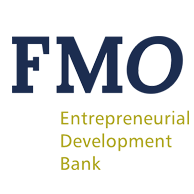


Public finance alone will not be enough to halt tropical deforestation - we need private capital and attractive blended finance options.
With the commitment to build a forestry portfolio of up to EUR 1 billion by 2030, FMO’s forestry strategy aims to catalyze greater levels of private investments in climate and biodiversity-enhancing forest and sustainable land use (FSLU) business models, including through blended finance programs like Mobilising Finance for Forests.
Whilst there is a growing appetite for investing in nature within Latin America and the Amazon region from local and international investors and fund managers, the current pipeline of investible business models is still relatively immature as new business models seeking to align climate and biodiversity impact with financial returns are being developed and concepts tested. Finding ways to bridge the gap and make them investment-ready remains a challenge.
At MFF’s joint knowledge exchange in Sao Paulo with the Restoration Seed Capital Facility (RSCF) and other partners, a project developer stated that “there is a need to understand from an investors’ point of view what makes a business ‘investible’, and to whom, in order to accelerate the flow of finance and mature this crucial sector.”
Also at the event, an investment accelerator commented that the current investment landscape in the regions shows that, whilst many businesses have entered their pipeline in the past few years, the majority are “too underdeveloped to absorb the capital that DFIs and other international investors want to provide, and hard to measure in terms of impact”.
Through small-group discussions, other event participants proposed that focusing on the market conditions, the quality of entrepreneurs, and educating investors on how to tailor investment processes to impact-oriented projects could be a solution to showing that investible businesses are already available. With the right support, these opportunities can provide favorable impact and financial returns to investors. In order to encourage investors and fund managers to make informed decisions, capacity building and increased dialogue between fund managers and project developers is essential to determine what constitutes an ‘investible’ or ‘bankable’ project.
Some projects and investment accelerators have started to create platforms that connect investors with companies based on filtering criteria such as ticket size, region, and funding instruments. When fully developed, this would match investors with appropriate opportunities, and help to gather data on the state of the pipeline and what is needed to accelerate the development of impactful and investible opportunities.
Investors and project developers must build a shared understanding of the realities of projects on the ground, to create more assurance and increase investment appetite. This form of ‘sensitization’ could foster a deeper understanding of the complexity of the sector and ultimately lead to the provision of effective catalytic capital in the future. In addition, investment accelerators should continue to develop tools to connect investors and fund managers with businesses in different investment stages.
Overall, normalizing the risk that comes with FSLU projects is key to scaling up forest finance in the future, and commitment and innovation is key to deploying the necessary capital if we want to hit the targets of the Paris Agreement. Creating new innovative tools, expanding access to capacity-building resources, and directly exposing investors to early-stage projects on the ground all could play a large role in scaling up finance for nature-positive operations in Latin America.
FMO manages Mobilising Finance for Forests (MFF), a UK Government-funded blended finance investment program which aims to combat deforestation and other environmentally unsustainable land-use practices that contribute to global climate change. With a €178 million (£150 million) commitment from the UK Government, MFF aims to catalyze €1 billion of private sector investment into forestry and sustainable land use projects in Africa, Asia, and the Amazon Basin over 5 years.
Visit our community platform for our latest knowledge products.